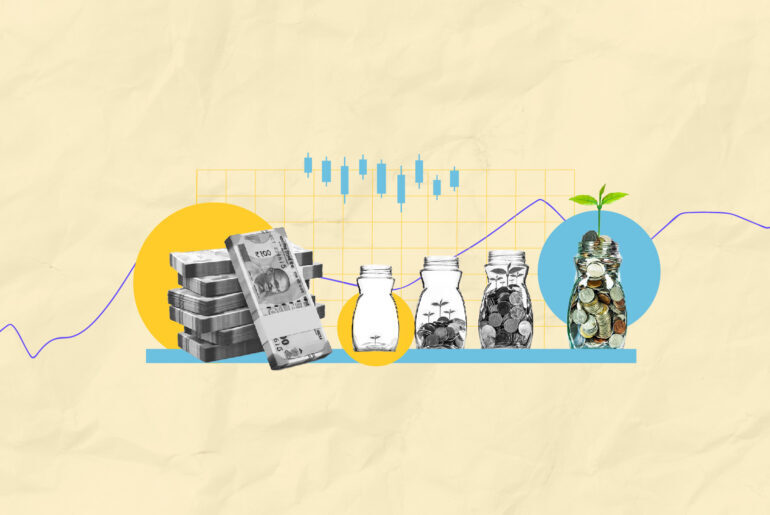Last Updated on Sep 22, 2021 by Aradhana Gotur
China, known as the ‘World’s factory’ has been the centre of global supply chains in the last few decades owing to favourable factors of production and a strong business ecosystem. The rise in the contribution of Chinese manufacturing since the early 2000s from 3.4% to ~13.6% in 2015 and then a drop to 13.1% in 2019 is clearly reflected in the total global merchandise trade. The recent decline in this share is attributed to higher labour costs, stringent environment, compliance costs, and other challenges. Around 30% of global manufacturing ($4 tn) happens in China.
The trend of diversifying the supply chain started in 2017 with China following stringent environment norms leading to production cuts during winters followed by changing geo-politics, trade war, and willingness of large companies/MNC to de-risk their supply chain. COVID-19 escalated the adoption of this strategy. Now, this trend looks structural and persistent. This trend is now named as China plus one strategy.
So, what is China-Plus-One?
Companies contemplating diversifying their dependence on China is a strategy known as "China-Plus-One". The strategy is an answer to having efficient supply chain management Click To Tweet
Companies contemplating diversifying their dependence on China is a strategy known as “China-Plus-One”. Now many MNCs are adding new operations in other developing Asian countries like India, Vietnam, Thailand, Bangladesh and Malaysia, and are welcoming new manufacturing opportunities. A strategy that is an answer to having efficient supply chain management. Sometimes, one thinks, is it a mere coincidence of such unrelated events happening together or nature is conspiring that India should take advantage of the situation and establish its mark in the global manufacturing sector.
A survey by UBS suggests that 20-30% of manufacturing will be leaving from China. India is likely to be the next best candidate to benefit from this altered situation owing to its competitive advantage in various industries, favourable factors of production, conducive business environment, and incentivising government policies.
A survey by UBS suggests that 20-30% of manufacturing will be leaving from China, making India the next best candidate to benefit from this altered situation Click To TweetThe government also clenched on the situation and took further steps in the same direction by introducing PLI schemes for multiple sectors like textiles, electronics, raising import duties on some products, and so on. Before COVID-19 too, the government had taken measures like reducing corporate tax rates, Atmanirbhar Bharat, and others to incentivize domestic production.
Table of Contents
Which sector would benefit and why?
Textile, metals, specialty chemicals, pharmaceuticals, electronic manufacturing sectors Click To TweetLet’s dig into this in detail.
Low-cost manufacturing and good infrastructure played a huge role in making China what it is today. Now, China would probably make a transition to high tech and value-added products. This would benefit other countries that have low-cost manufacturing facilities like India. Sector benefit:
1. Textile sector
Macro Tailwinds: Resulting in more exports from India
- Ban on Xingjiang (China) Cotton by US (80% of China’s cotton originates from this region)
- Decentralisation and consolidation trends: Decreasing market share of China
- Adoption of China plus one strategy
Why India is in an advantageous position?
- Second largest employer after agriculture (labour intensive: India has cheap labour comparatively)
- Contributes 5% to India’s GDP, 7% of industrial outputs in value terms, 12% of the country’s export earnings. Therefore, it will always be in the focus/priority of the government’s industry benefit list
- Abundance of raw material
- Presence across the entire value chain
- Second largest manufacturer of textiles and clothing in the world
These points are important to be competitive in long term.
It is important to understand how the industry works and find out which aspect of the value chain holds the most value and can provide us with great returns.
Identify a company that is into either:
Spinning business/ Backward or forward integrated player is a preferable play or;
- Organized
- Export market share is amongst the highest
- Large players enjoy better control over the supply chain and are able to mobilize working capital better
- Can command an additional premium for value-added service resulting in improved margins
Exports (Apparels) or;
- US markets are stronger
- China +1 strategy
- Consolidation in the supplier base
Home textiles (Exports)
- India has a good market share
- China is losing market share and India is gaining market share
The Indian textile industry is expected to grow at a CAGR of 10% in the next 5 yrs. On the other hand, the growth rate of global textile is low. The growth for Indian companies would come from gaining market share which has been started to be visible in the quarterly results.
Stringent environment norms in China along with trade war to limit production. Sector benefit:
2. Metals sector
China governs the global price mechanism of many metals. Any change in demand and supply there changes the investment scenario and business environment in the rest of the world.
Recent policies in China helping other competitive countries to grow:
- With effect from 1st May 2021, all export rebates applicable (9-13% VAT rebates) are withdrawn.
- The booming Chinese economy (GDP to grow by 7.5-8.5% over 2020) is exhibiting all signs of growing steel demand as merchandise exports are up, consumer spending is on the rise and the capex is substantial.
- The country is looking at imposing an export duty of 10-25% on steel products including Hot-Rolled Coil.
For instance: India has a competitive advantage in steel and aluminium on account of an adequate supply of raw materials and a growing market for finished goods. Hence, it can remain competitive globally on the backdrop of China reducing the production of these metals. Also, due to ESG concerns, the capex in China for primary metal production is not in sync with the demand leading to higher prices.
Currently, the sector is getting benefited by strong price realisation in the domestic and export markets. It saw the highest ever quarterly earnings of Rs. 33,700 cr and contributed to 45% of incremental PAT in Q1 FY2022.
Currently, strong price realisation in the domestic and export markets are lending support to the metals sector. It saw the highest ever quarterly earnings of Rs. 33,700 cr and contributed to 45% of incremental PAT in Q1 FY 2022 Click To TweetGovernment initiatives in specialty steel
India: heavily import-dependent, out of the 6.7 mn tonnes of steel imported, around 4 mn tonnes is specialty steel. The PLI scheme for the specialty steel industry will apply for a 5-yr period from 2023-24 onwards. It is expected to bring in an investment of approximately Rs. 40,000 cr and capacity addition of 25 mn tonnes for specialty steel.
4 mn out of the 6.7 mn tonnes of steel imported by India is specialty steel. The PLI scheme for this sector will apply for a 5-yr period from 2023-24 onwards and is expected to bring in an investment of approximately Rs. 40,000 cr Click To Tweet3. Specialty chemicals
With a 35% market share in global exports, China is slowly losing its momentum due to changes in trade dynamics and stringent environment norms. This will help India increase its global market share from 3% to 9% as expected in the coming decade due to growth in the end-user market, higher exports (shutdown of plants in China). Specialty chemicals constitutes about 18% of the total chemical industry in India.
The Indian chemical industry grew by 11.7% CAGR over CY 2015-20 and is valued at around $32 bn. It is expected to grow at a CAGR of 12.4% in the next 5 yrs.
4. Pharmaceuticals: China plus one and localisation at play
India advantage:
- Generic medicines: 20% share in global supply by volume
- Highest number of US-FDA compliant Pharma plants outside of USA
- Expected to reach $65 bn by 2024, and ~$120-130 bn by 2030 (currently valued at $41.7bn)
- Pharmaceutical industry growth rate 10-12%
- Cost of manufacturing ~33% lower than western markets
- The API industry is the third’s world largest
Industry scenario:
Tailwinds in the API segment: It is estimated that Chinese manufacturers make around 40% of all APIs used worldwide and that China and India are the sources of 75-80% of the APIs imported to the US. The number of Chinese facilities producing APIs for the US market has increased over the past decade for cost savings and less stringent environmental regulations. Management interviews and results show that the theme is playing very evidently.
Currently valued at $41.7 bn, the Indian pharma sector is expected to reach $65 bn by 2024 and ~$120-130 bn by 2030 Click To Tweet5. Electronic manufacturing: Localisation at play
Government initiatives towards import substitution augur well for this sector to register an expected CAGR of 30% over the next 5 yrs. India has proved its excellence to become a leading manufacturer of mobile phones in recent years, albeit more as an assembler and are getting slowly integrated into global value chains.
Electronic manufacturing to register an expected CAGR of 30% over the next 5 yrs Click To TweetSimilar trends have been observed in automotive and few other sectors too.
Conclusion
The rhythm of change has started playing its tune where China is on shuffle and India is on repeat. A survey by UBS suggests that 20-30% of manufacturing will be leaving from China, making India the next best candidate Click To TweetThe global macro tailwinds in some sectors along with prudent government reforms are expected to put India on a growth trajectory path in a sustainable manner. Discussion with different management, attending concalls, and analyzing quarterly results give reassurance on the same.
The rhythm of change has started playing its tune where China is on shuffle and India is on repeat.
Check out smallcases managed by Niveshaay, whose founder is the author.
- Government Policy’s Role in Energy and Transportation Opportunities - Nov 6, 2023
- How To Take Advantage of Small-Cap Stocks To Make Good Profits - Apr 12, 2023
- What To Expect From Green Energy Sector in 2023? - Jan 19, 2023





